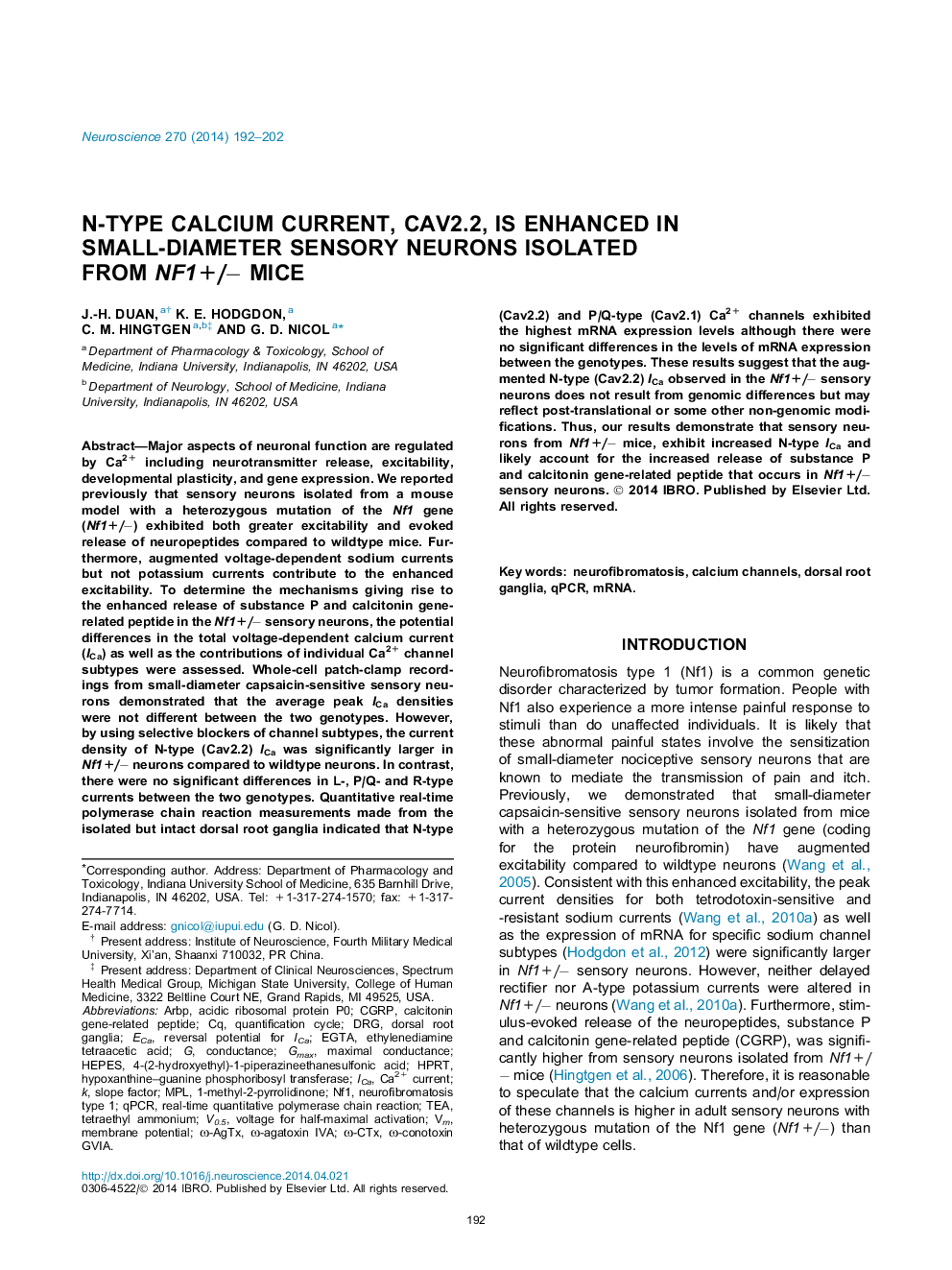| کد مقاله | کد نشریه | سال انتشار | مقاله انگلیسی | نسخه تمام متن |
|---|---|---|---|---|
| 4337601 | 1614806 | 2014 | 11 صفحه PDF | دانلود رایگان |

• Peak ICa densities were not different between wildtype and Nf1+/− sensory neurons.
• N-type (Cav2.2) ICa was significantly larger in Nf1+/− sensory neurons.
• No differences in L-, P/Q- and R-type currents between the two genotypes.
• Using qPCR, Cav2.2 and Cav2.1 exhibited the highest mRNA levels in the DRG.
• No differences in the levels of channel subtype mRNA expression between the genotypes.
Major aspects of neuronal function are regulated by Ca2+ including neurotransmitter release, excitability, developmental plasticity, and gene expression. We reported previously that sensory neurons isolated from a mouse model with a heterozygous mutation of the Nf1 gene (Nf1+/−) exhibited both greater excitability and evoked release of neuropeptides compared to wildtype mice. Furthermore, augmented voltage-dependent sodium currents but not potassium currents contribute to the enhanced excitability. To determine the mechanisms giving rise to the enhanced release of substance P and calcitonin gene-related peptide in the Nf1+/− sensory neurons, the potential differences in the total voltage-dependent calcium current (ICa) as well as the contributions of individual Ca2+ channel subtypes were assessed. Whole-cell patch-clamp recordings from small-diameter capsaicin-sensitive sensory neurons demonstrated that the average peak ICa densities were not different between the two genotypes. However, by using selective blockers of channel subtypes, the current density of N-type (Cav2.2) ICa was significantly larger in Nf1+/− neurons compared to wildtype neurons. In contrast, there were no significant differences in L-, P/Q- and R-type currents between the two genotypes. Quantitative real-time polymerase chain reaction measurements made from the isolated but intact dorsal root ganglia indicated that N-type (Cav2.2) and P/Q-type (Cav2.1) Ca2+ channels exhibited the highest mRNA expression levels although there were no significant differences in the levels of mRNA expression between the genotypes. These results suggest that the augmented N-type (Cav2.2) ICa observed in the Nf1+/− sensory neurons does not result from genomic differences but may reflect post-translational or some other non-genomic modifications. Thus, our results demonstrate that sensory neurons from Nf1+/− mice, exhibit increased N-type ICa and likely account for the increased release of substance P and calcitonin gene-related peptide that occurs in Nf1+/− sensory neurons.
Journal: Neuroscience - Volume 270, 13 June 2014, Pages 192–202